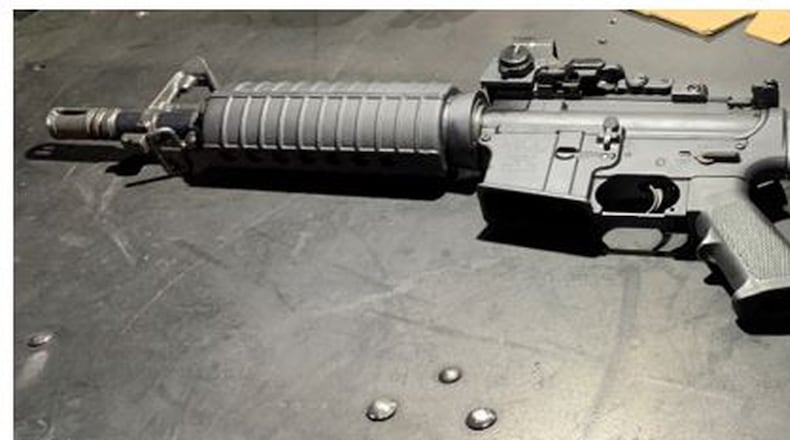The braces are not outlawed, nor is using them to convert a pistol into a short-barreled rifle. But owners who do that must pay a $200 tax, register the weapon and be subject to a background check for all transfers, including private ones. The feds gave people until Wednesday to register the weapon without having to pay the one-time tax.
Gun owners also can comply by removing the stabilizing brace to make the firearm a pistol or by surrendering short-barreled rifles covered by the rule to the Bureau of Alcohol, Tobacco, Firearms and Explosives (ATF).
Court challenges by gun rights groups who oppose the rule are pending.
The ATF received 255,162 applications for tax-free registration as of June1, but does not have a state-by-state breakdown, said Erik Longnecker, deputy chief of the public affairs division in the Washington D.C. office.
“We are unable to provide further comment due to ongoing litigation regarding the final rule,” Longnecker said.
Evan English, president and owner of Olde English Outfitters in Tipp City, stopped selling the braces or guns equipped with them before the rule took effect. He said it isn’t fair to gun owners who previously bought and used the braces to now have to comply with the new rule.
The rule does not affect stabilizing braces that are designed to conform to the arm and intended for people with disabilities, rather than creating a buttstock to shoulder the weapon as a rifle, according to an ATF summary.
“This rule enhances public safety and prevents people from circumventing the laws Congress passed almost a century ago. In the days of Al Capone, Congress said back then that short-barreled rifles and sawed-off shotguns should be subjected to greater legal requirements than most other guns,” ATF Director Steven Dettelbach said in a justice department news release.
“The reason for that is that short-barreled rifles have the greater capability of long guns, yet are easier to conceal, like a pistol.”
Supporters of the rule said it helps make communities more safe.
“Dayton has experienced the serious harm short-barreled rifles can inflict first-hand in the Oregon District mass shooting,” Dayton Mayor Jeffrey Mims Jr., said in January when the rule took effect. “I applaud this new rule to regulate converted pistols like rifles, it is an important step forward in increasing accountability and public safety in local communities.”
On Aug. 4, 2019 Connor Betts, 24, of Bellbrook opened fire in the Oregon District with a semi-automatic pistol that was modified with a brace and an attached drum magazine that could hold up to 100 .223-caliber rounds. In less than a minute he killed nine people, including his sister, and injured more than two dozen others before police shot him to death.
Surveillance video before the shooting showed Betts walking with a large backpack, which police believe contained the parts of his gun, before he opened fire.
Those killed in the shooting were Monica Brickhouse, 39; Nicholas Cumer, 25; Megan Betts, 22; Derrick Fudge, 57; Thomas McNichols, 25; Lois Oglesby, 27; Saeed Saleh, 38; Logan Turner, 30; and Beatrice Warren-Curtis, 36.
Follow @LynnHulseyDDN on Twitter and Facebook
About the Author


